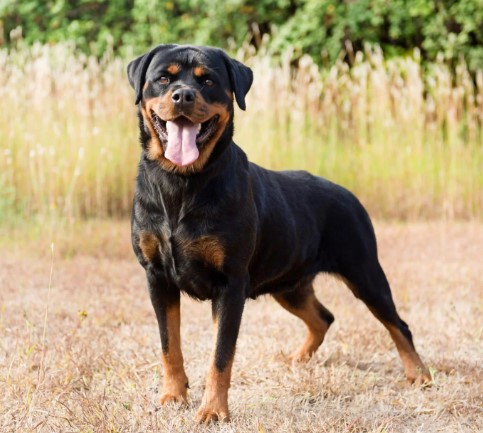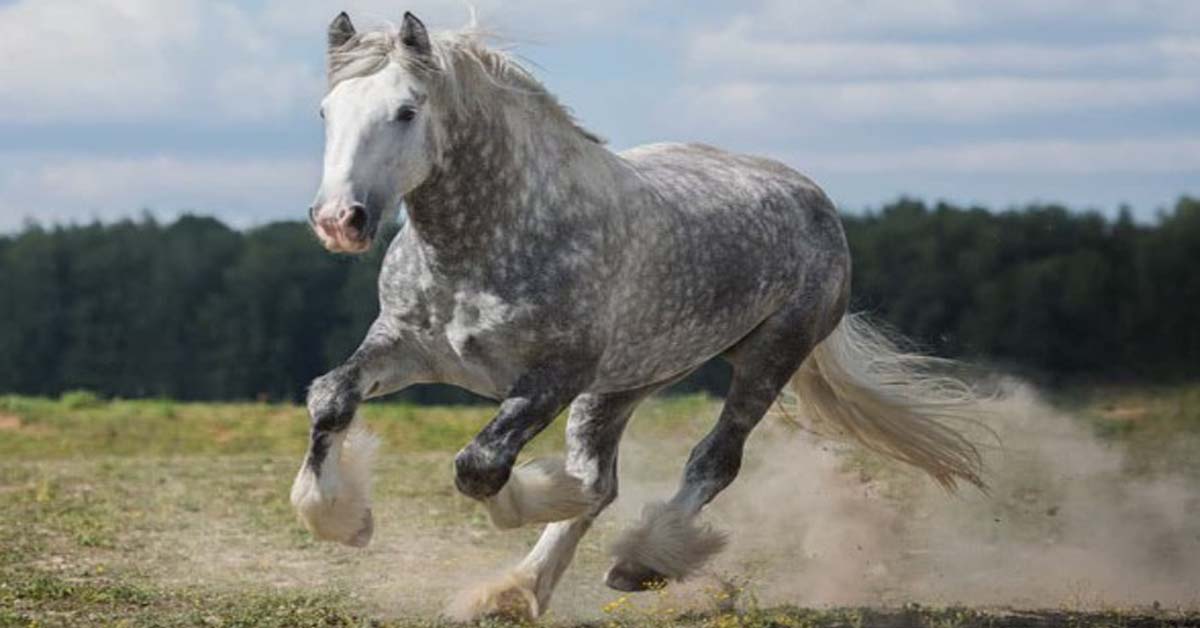Boasting a distinctive, partially hairless coat that imparts a wolf-like aesthetic, the Lykoi stands out as a cat breed unlike any other. Its unique features include a hairless mask encompassing the nose, mouth, eyes, and ears, further enhancing its werewolf resemblance. Unsurprisingly, the breed’s name derives from the Greek word “Lykos,” meaning wolf.
In adherence to the breed standard, a Lykoi’s coat is intended to evoke the appearance of an opossum. While the coat may appear coarse and wiry, it is surprisingly soft and silky to the touch. Devoid of an undercoat, the guard hair exhibits variable growth among individual cats and across seasons. Although some Lykoi may occasionally exhibit near-hairlessness, in show settings, a more substantial coat is favored over a thinner one.
Defined by a distinctive running color pattern featuring a blend of pigmented and non-pigmented white hair (melanistic hair), the roan pattern is most pronounced in solid-colored cats, particularly those with a black roan hue.
Beyond their wolf-like exterior, Lykoi cats are anything but intimidating. They are outgoing, amiable, and enthusiastic about meeting new people and engaging in play. These cats form strong bonds of loyalty with their preferred human companions, making them wonderful family pets. It is advisable to keep Lykoi cats indoors, as their sparse hair coat makes them susceptible to sunburn and skin damage if allowed to roam outdoors.
- Origin: United States
- Height:8 to 10 inches
- Weight:6 to 12 pounds
- Lifespan:12 to 15 years
- Colors: Black-based roan – with white hairs scattered throughout
- Length: About 11 to 14 inches
Breed Characteristics || Lykoi characteristics
The Lykoi cat is categorized as a partially hairless feline, lacking a true undercoat. Areas such as the eyes, chin, nose, muzzle, and behind the ears typically lack hair. The exposed skin, ears, and noses exhibit a leather-like appearance, and while the skin is generally pink, sun exposure may cause it to darken. Shedding is common among Lykoi cats, with some individuals occasionally appearing more hairless than usual, a normal occurrence unrelated to any health issues.
There exists variation in the hairiness of Lykoi cats, ranging from those nearly fully covered in hair to nearly bald specimens. Breeders actively favor black cats, although naturally occurring mutations result in a range of coat colors. Lykoi cats with white coats may display a silvery appearance, often referred to as a roan, a term commonly used in non-feline species as well. However, when white does occur, it typically falls into the “all-black” category.
Their unique haircoat comprises a blend of pigmented (melanistic) and solid black hair, starting as solid black at birth, transitioning to hairlessness within a few weeks, and developing a roan coat color.
Despite not being particularly large, Lykoi males generally surpass females in size, presenting a lean and robust physique reminiscent of wild cats. Their tails are shorter in proportion to their bodies, and their legs exhibit a medium length relative to their size. Characterized by broad, high, and pointed ears, these contribute significantly to the distinctive facial appearance often associated with the “wolf look” of the animal.
| Apartment Living: 5 | Potential for Weight Gain: 3 |
| General Health: 5 | Intelligence: 4 |
| Child Friendly: 4 | Tendency to run away: 3 |
| Playfulness: 4 | Energy level: 3 |
| Dog friendly: 5 |

History
The history of the Lykoi cat is brief and rather unconventional. While the distinctive features of the Lykoi include the partial hair coat and roan pattern, in all other aspects, it embodies the characteristics of a typical house cat.
The gene responsible for the unique Lykoi hair coat naturally arises sporadically within a population of domestic shorthair black cats. Although this natural genetic mutation was reported over 40 years ago, it’s only recently that this cat, with its unmistakable werewolf-like appearance, has started to garner attention.
Kittens
In 2011, Patti Thomas rescued two distinctive kittens, a male named Silver Lining and a female named Ray of Hope, from a rescue organization in Virginia, U.S. These siblings, sharing the same unique hair coat, originated from a solid black domestic shorthair mother.
Concerned about a potential illness, Patti sought the expertise of Dr. John Goble, a veterinarian in Tennessee who later became a co-owner of the kittens. After a thorough examination, Dr. Goble confirmed the kittens’ perfect health. Intrigued by their unique hair coat, efforts were made to understand its origin.
Questions arose regarding any potential relation to other known hairless cat breeds like the Devon Rex or the Sphynx. Through the collaboration of Dr. Goble and geneticist Leslie Lyons, it was determined that the kittens did not share genetics with these breeds and had no familial connection.
Subsequently, two more kittens with the distinctive hair coat were entrusted to Dr. Goble and his wife, Brittney Goble. Pairing them with the initial unrelated pair, they established the Lykoi cat breed. Patti Thomas and the Gobles swiftly initiated a breeding program to meticulously oversee the health and gene pool of the Lykoi cat.
The Lykoi cat breed is closely safeguarded, with breeders conscientiously avoiding inbreeding and preventing the inadvertent introduction of new genetic health issues. Officially recognized by the International Cat Association in 2012 and the Cat Fanciers Association in 2018, the Lykoi cat remains a rarity, captivating enthusiasts with its “werewolf” charm, amiable nature, robust health, and endearing fuzzy visage.
Appearance
There’s no denying it: the Lykoi can be quite a distinctive feline, perhaps even a bit challenging to embrace. Resembling a werewolf, this cat is typically of medium size, featuring a sleek, muscular physique and a wedge-shaped head adorned with a hairless “mask” behind its eyes, nose, mouth, and ears. Some Lykois even sport complete hairlessness.
Despite occasional confusion with Sphynx cats, the Lykoi have no genetic link to them. Their fine, short coat, though appearing rough, is surprisingly soft, and the standard color for Black Roan Lykoi cats gives them a subtle silver sheen. Lacking an undercoat, Lykois possess a thin top coat, contributing to their almost werewolf-like aesthetic. Their eyes, nearly round and displaying amber or green hues, add to their distinctive look.
Contrary to expectations, the Lykoi is not classified as a hypoallergenic breed. These cats shed considerably, sometimes more than the typical domestic shorthair, and Lykoi kittens are born with full coats that shed as they grow. According to Marilyn Krieger, a certified cat behavior consultant in San Francisco, the breed originates from naturally occurring mutations in domestic cats. Kittens are born with hair, which starts to shed around one or two weeks of age. Some may become completely bald before regrowing fur.
Before bringing a Lykoi kitten into your home, it’s advisable to spend time with the breed to gauge how your allergies might react.
Temperament
The Lykoi cat is characterized by an affectionate and laid-back nature. Its friendly disposition allows for seamless interaction with humans, other cats, and dog companions that are cat-friendly. Typically, Lykoi cat behavior leans towards playfulness, although they may occasionally venture off on their own.
According to Krieger, “Lykois are sweet, affectionate cats and exude playful energy.” While they are amicable towards strangers, their initial demeanor may be somewhat reserved and shy, as they naturally gravitate towards the companionship of their regular human associates and may seek closeness when the company extends.
Personality
So, does the Lykoi function like a werewolf? Will it transform at midnight or upon the sighting of a full moon? As far as we know, this is not the case, although the situation may change when attempting to bath them.
The untamed lineage of the Lykoi is distinctly apparent in its characteristics. For instance, they exhibit a robust predatory instinct and thoroughly relish a good chase. Nevertheless, when confronted with unfamiliar situations, they tend to exercise caution and opt for assessing the scenario before making any bold moves.
Breeders have made concerted efforts to accentuate amicable personality traits, achieving some success. Lykois become friendly once trust is established. Even in domestic settings, they remain highly active and thrive when provided ample space and outlets for their exuberant energy.
In terms of play, Lykois particularly enjoys toys that allow them to engage in stalking and pouncing. They showcase adept problem-solving skills and can even partake in a game of fetch, akin to dogs.
While they may not excel at being placid lap cats for extended periods, Lykois do appreciate some human interaction. Although they may prefer resting on their owners’ tummies, they often prefer engaging in their pursuits.
Health
Given that the Lykoi is a recent breed, comprehensive insight into their genetic composition and potential health issues is still in the early stages. To ensure their well-being, it is advisable to undergo standard feline health screenings, encompassing assessments for common issues like feline infectious peritonitis (FIP) and heart problems.
“Cats commonly face kidney disease; it’s a prevalent concern in cats,” notes Michelle Beck, DVM, CCRT, CVA, from Backlund Animal Clinic in Omaha, Neb. She further emphasizes, “By age 10, about 70 percent of cats have arthritis somewhere in their body.”
Maintaining an open dialogue with your veterinarian regarding your Lykoi’s aging process is crucial, allowing for timely identification and monitoring of potential issues at home.
Lynn Kaufman, DVM, from Prairie View Animal Hospital in Grimes, Iowa, highlights the common occurrence of hyperthyroidism. This condition, stemming from an enlarged thyroid, can be managed with radiation treatment and a low-iodine diet, providing owners with viable treatment options.

Care
The distinctive coat of the Lykoi entails minimal shedding and does not demand extensive brushing; however, it does require special attention. When brushing, opt for bristles that are exceptionally soft to avoid scratching their sensitive skin. Before purchasing a brush, conduct a test by running the bristles against the skin of your hand to ensure they are sufficiently gentle.
Similar to completely hairless breeds, the Lykoi benefits from more frequent bathing than typical for cats. Employing a moisturizing shampoo during baths helps eliminate excess skin oil, preventing clogged pores that could lead to blackheads or a form of acne. The frequency of bathing varies among individual Lykoi cats, and seeking advice from your breeder or veterinarian is recommended regarding the ideal frequency and shampoo selection.
To maintain short nails, trim your Lykoi’s nails weekly or every other week. During baths, inspect the ears, and if any wax or dirt is observed, use a pet ear cleaner and a cotton ball for ear cleaning. If the ears appear red or excessively dirty, scheduling a veterinary checkup is advisable.
Given the Lykoi’s high activity level, ensure they have ample toys, climbing spaces, and exploration areas. With an array of toys, Lykoi is content playing with various companions, whether it’s you, another cat, or even engaging in solo play. Rotate the toys periodically, introducing different ones to maintain their interest.
Provide a variety of scratchers in designated scratching areas, encompassing both vertical and horizontal options.
Best Food For
Despite their unconventional appearance, the nutritional requirements of Lykoi cats do not differ from those of other feline counterparts. Given their carnivorous nature, ensuring an ample supply of animal protein is particularly crucial for their well-being.
It is recommended to steer clear of cat food formulations that include grains. Grains in cat food may contribute to intolerance and digestive issues, making them unsuitable for inclusion in the diet of your Lykoi.
For conscientious cat owners focused on quality, products from I Love My Cat align with your priorities. Our cat food comprises easily digestible ingredients, offering grain-free options in both wet and dry formats. This ensures your Lykoi receives high-quality animal protein derived from fish, meat, or insects, making it an ideal choice for species-appropriate nutrition.
Feeding
Despite their distinct appearance, the nutritional requirements of Lykoi cats align with those of other feline counterparts.
Each cat is an individual with unique preferences, dislikes, and dietary needs. Nevertheless, as carnivores, every cat must derive 41 specific nutrients from their food.
The quantity of these nutrients varies based on factors such as age, lifestyle, and overall health. Therefore, it’s understandable that a growing, energetic kitten requires a different nutrient balance in its diet compared to a less active senior cat.
Considerations for maintaining an ‘ideal body condition’ following dietary guidelines and accommodating individual preferences, whether for wet or dry food recipes, are also crucial aspects of cat care.
Grooming
While the Lykoi’s fur is not long and doesn’t easily tangle, their generally unkempt appearance makes it challenging to notice scrapes and minor injuries. Therefore, it’s advisable to go through their coat once a day using a proper comb at least once a week. Given that Lykoi cats can shed their entire coat before regrowing it for the next season, maintaining a consistent grooming routine is crucial for this breed.
Brushing them once or twice a week proves sufficient to manage shedding effectively. It’s recommended to bathe this breed approximately once a month to keep their exposed skin clean and prevent oil build-up.
It’s essential to be attentive to the coat’s condition, as a greasy appearance may indicate that your cat is no longer grooming itself, potentially signaling poor health or overweight concerns. Similar to all cats, Lykois benefit from regular vaccinations, parasite control measures, and annual veterinary health checkups.
Training
Training the Lykoi wolf cat, like any other cat, is not a straightforward task. This breed is highly independent, displaying a reluctance to follow instructions. They prefer to operate on their own terms, so addressing behaviors like furniture scratching or counter-jumping may require a bit of ingenuity.
Achieving optimal results involves exercising patience and maintaining consistency in your approach to discourage undesired behaviors.
With persistent encouragement, your Lykoi Wolf kitten should adapt well to using the litter box, alleviating concerns in that aspect.
Exercise
As previously noted, the Lykoi wolf cat breed is highly active and requires physical and mental stimulation for optimal well-being. To keep your cat healthy, aim for at least 15 to 20 minutes of daily exercise, with a bit of flexibility.
Ensure a variety of toys, including laser pointers, feather toys, and balls, are available for your cat to engage with at their convenience. While they may enjoy playing with other pets or children, it’s essential not to compel them into such interactions.
Where to adopt or buy Lykoi || lykoi cat for sale
Lykoi cats are exceptionally rare, and acquiring a Lykoi kitten often entails joining an extensive waiting list. The Cat Fanciers Association and The International Cat Association feature active and reputable breeders on their websites.
While the chances of encountering an adult or kitten Lykoi at an animal shelter or rescue group are slim, breeders may occasionally be aware of adult Lykois seeking rehoming. Although uncommon, it is conceivable to find a domestic shorthair with a genetic mutation resembling that of a Lykoi in a shelter or rescue group.
See More Cat Breeds For Further Research
FAQs
lykoi cat price || Lykoi Price in India:
Breeding cats are typically priced between $3,000 and $5,000 (approximately R43,500 to R72,500).
Are Lykoi Cats Friendly?
Despite being dubbed the “wolf cat” or “werewolf cat,” Lykois are genuinely unique and friendly. Their wild appearance doesn’t overshadow their loving, playful nature, making them amiable companions for both humans and other animals.
What is Special About the Lykoi?
A distinctive trait of the Lykoi breed is their significant shedding in old age, followed by regrowth depending on the season. The absence of a facial coat contributes to their werewolf-like appearance.
How Much is a Lykoi Cat?
For a quick pricing overview: The initial cost for a Lykoi kitten typically starts around $1,500, with prices potentially reaching up to $2,500. Certain breeders specialize in producing litters with Lykoi kittens.
Are Lykoi Cats Hypoallergenic?
Despite the appearance of a sparse hair coat, Lykoi cats are not hypoallergenic. They possess a long topcoat and regularly shed. Families with known allergies are advised to reconsider getting this breed.











